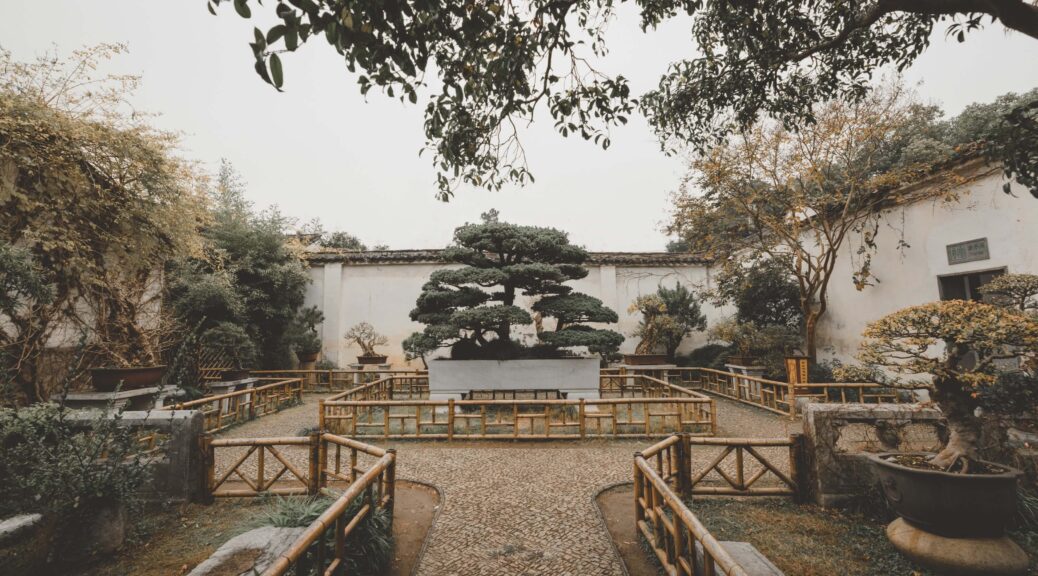
What is a Zen Garden?
A Zen garden, sometimes called a Japanese Dry Garden or Japanese Rock Garden, is a type of dry landscape garden that is typically composed of stones, rocks, and gravel. The garden is often used as a place of contemplation and reflection.
The zen garden originated in China and later spread to Japan. The word “zen” is derived from the Japanese word “zen-na,” which means “meditation.” This style of garden typically creates a miniature landscape through careful arrangements of stones, water features, moss, pruned trees and bushes. The sand or gravel in a Zen Garden is often raked in a circular fashion to simulate the calming ripples of water.
While you can find beautiful examples of Zen gardens in many places throughout the world, they are commonly found at Buddhist temples or monasteries. Historically, Zen gardens originated in Kyoto, Japan at Zen temples during the Muromachi period. They were mean to serve as an aid for Zen mediation and Koan study, by representing the calming essence of nature.
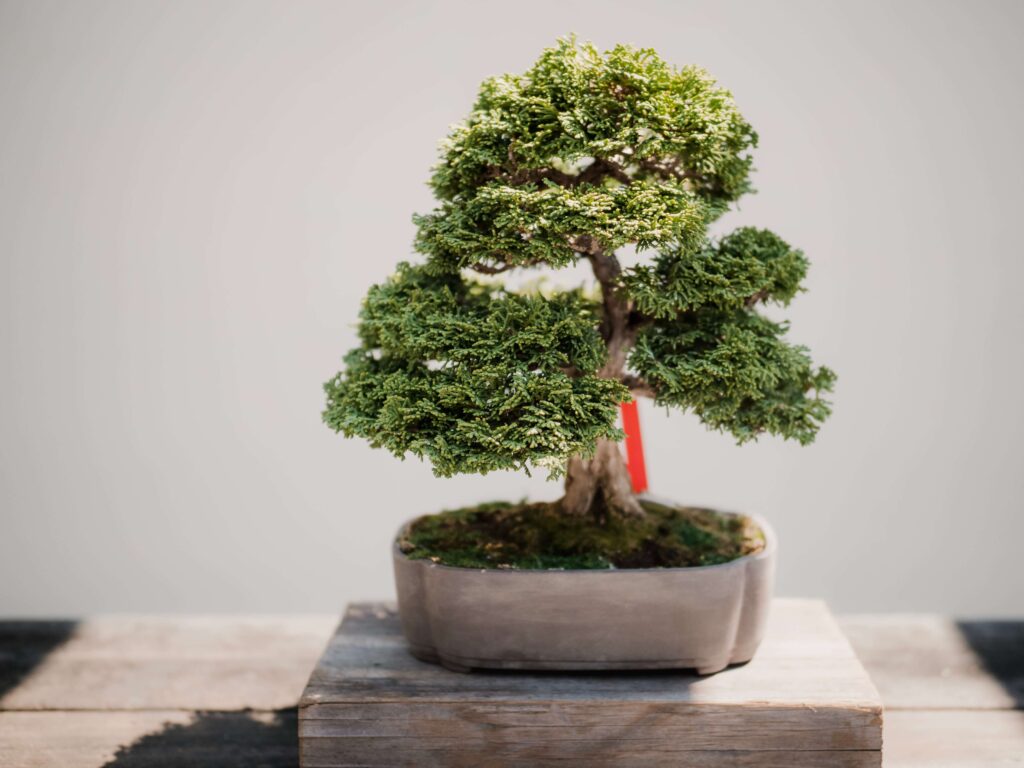
Stay in touch with Being Zen
Zen gardens are often designed with a few key elements in mind:
- Aesthetics: The garden should be pleasing to the eye and create a sense of calm.
- Minimalism: The garden should be free of clutter and unnecessary elements.
- Nature: The garden should feature natural elements such as rocks, gravel, and plants.
- Balance: The garden should be balanced and harmonious.
- Symbolism: The garden should feature symbols that represent different aspects
How to create a zen garden
1. Choose a location for your garden. Zen gardens can be created indoors or outdoors. If you choose to create an indoor garden, you will need to choose a location that receives plenty of natural light (unless you choose to focus exclusively on rocks and water features, rather than plant life).
2. Select the size of your garden. Zen gardens can range from small, desktop gardens to large, backyard landscapes. Use the space you have available!
3. Choose your plants. Zen gardens typically feature low-maintenance plants such as moss, bamboo, and pruned tress or bushes. In larger Zen Gardens, you might find trees like Japanese maples, black pines or red pines. Other common plants found in this style of garden include Japanese andromeda, boxwoods, azaleas and Camellia.
4. Select your hardscape materials. Hardscape refers to the non-plant elements of your garden, such as gravel, stones, and wood.
5. Arrange your plants and hardscape materials. Be sure to create a balance of positive and negative space in your garden.
6. Add water features. Water features are optional, but can add a sense of calm to your garden. Who doesn’t love the sound of a bubbling stream or a rushing waterfall?
7. Create a pathway. A pathway can introduce guests into the garden and make it easier to maintain. Choose contrasting materials and evaluate how the path will affect your garden. Do you want your pathway to be the centerpiece, or simply a utilitarian feature of your Zen Garden?
What are Zen Gardens used for?
Zen gardens can serve many purposes, such as providing a place of contemplation and reflection, or simply adding beauty and interest to a space. Historically, Zen gardens were created as an aid for Zen meditation, by representing the calming essence of nature.
That said, there doesn’t have to be spiritual or religious reason to create or visit a Zen garden. They can simply be a wonderful way to spend a relaxing afternoon in nature.
What are the rules of a zen garden?
There are no set rules for creating or enjoying a Zen garden, but there are a few guidelines that can help you create a space that is harmonious and calming.
Often, Zen Gardens are structured around several principles: austerity, simplicity, naturalness, asymmetry, subtlety, unconventional-ness, and stillness. To create an authentic meditation garden, keep these concepts in mind as you think about designing your space.
Examples of famous and inspiring Zen Gardens
1. Japanese Tea Garden, Golden Gate Park
San Francisco, CA
The Japanese Tea Garden allows visitors to experience the natural beauty, tranquility and harmony of a Zen garden right in San Francisco’s Golden Gate Park.
Created as part of the 1894 California Midwinter International Exposition, the Japanese Tea Garden is the oldest public Japanese garden in the United States.
If you’re in San Francisco, a stop at the Japanese Tea Garden is a must!
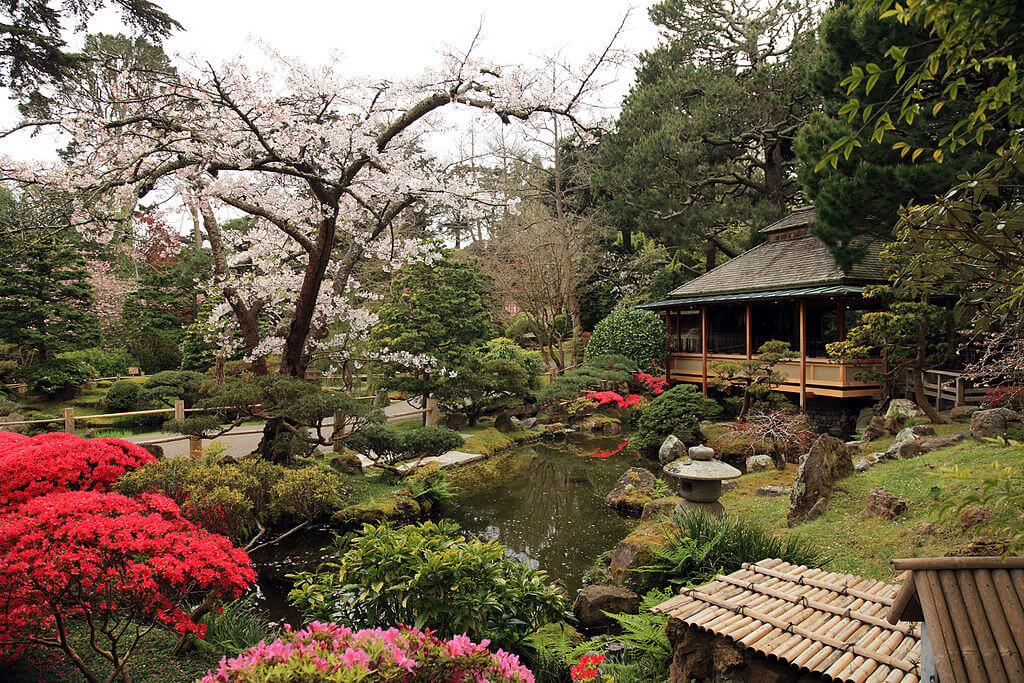
2. Portland Japanese Garden
Portland, Oregon
The Portland Japanese Garden is a traditional Japanese garden occupying 5.5 acres (22,000 m2) within Washington Park in the west hills of Portland, Oregon.
Founded in 1963 with help from the city of Portland, the garden is composed of five distinct styles: the Flat Garden, Strolling Pond Garden, Natural Garden, Sand and Stone Garden, and Tea Garden. The Portland Japanese Garden is a private non-profit organization, and is considered one of the most authentic Zen gardens outside of Japan. In 2007, the Portland Japanese Garden was ranked as one of the top ten most authentic Japanese gardens in North America by Sukiya Living, the only other gardens on the list being located in Japan.
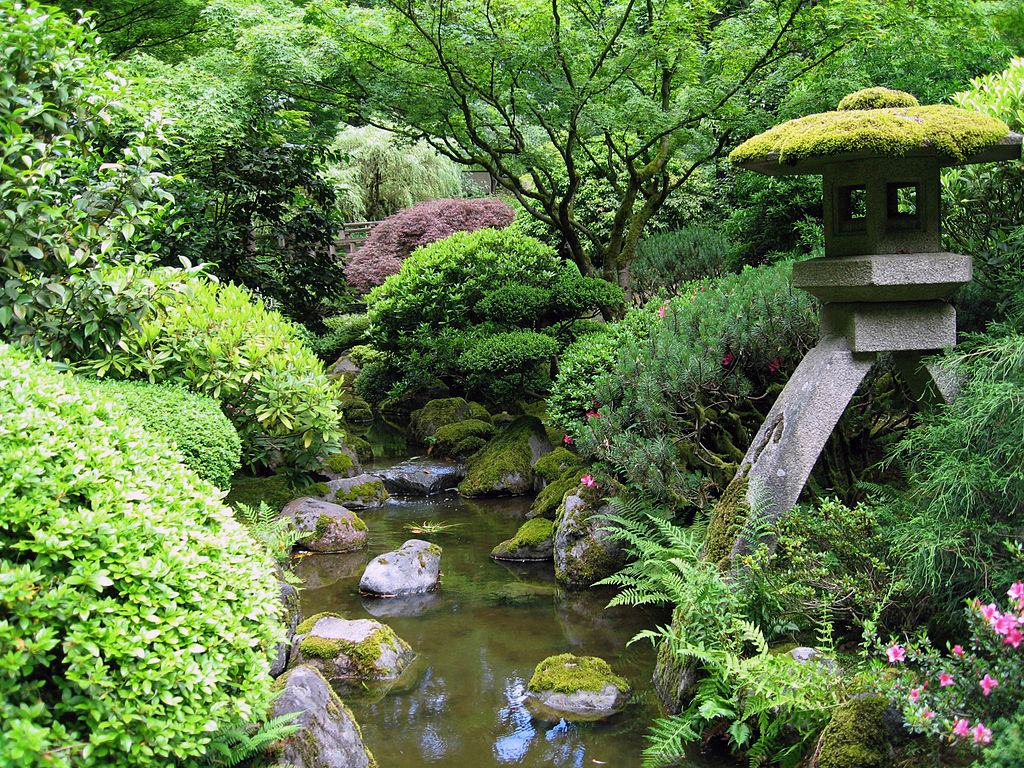
3. Ryoan-ji Temple
Kyoto, Japan
Ryoan-ji is a Zen Buddhist temple in Kyoto, Japan. Though the exact date is unknown, the temple was likely built in the 15th century and is best known for its rock garden, which is considered one of the finest examples of karesansui (a Japanese rock garden) in the world. The garden consists of 15 rocks arranged in a sea of gravel, and interestingly, from any vantage point in the garden, one of the rocks is always at least partially hidden from view.
The temple grounds also feature several smaller gardens and a luscious public park with a pond. You can even stop at the onsite restaurant and enjoy a traditional Yudofu meal (Japanese boiled tofu).
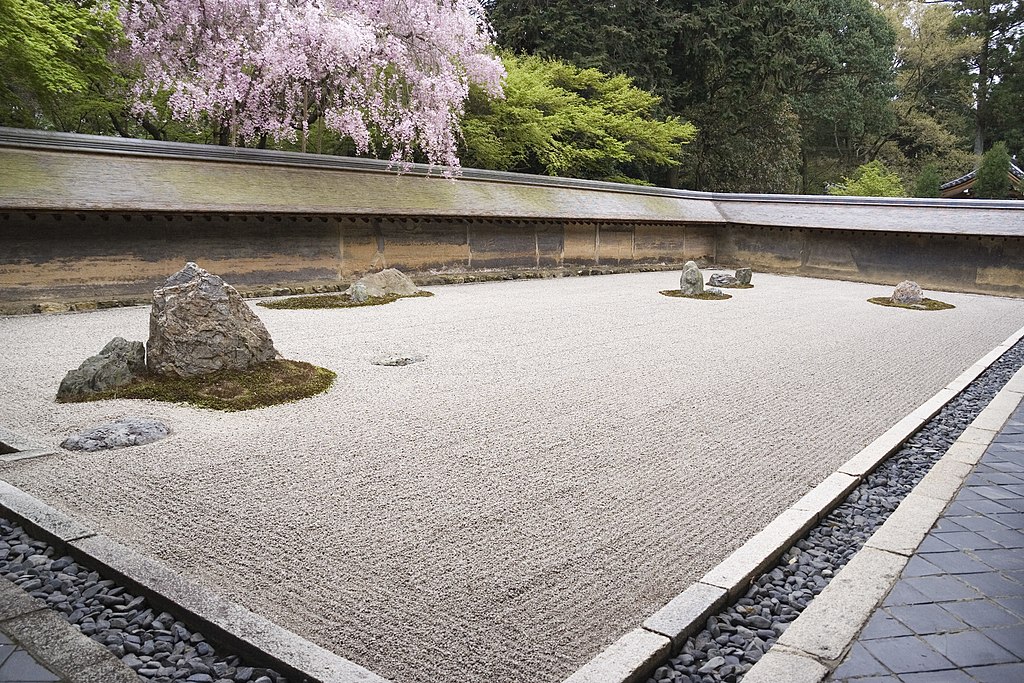
4. Kennin-ji
Kyoto, Japan
Kennin-ji is a Zen Buddhist temple in Kyoto, Japan. The temple was founded in 1202 by the priest Eisai, and is the oldest Zen temple in Kyoto. Part of the Rinzai Sect of Japanese Buddhism, the temple is listed among the five great Zen temples of Kyoto. Located just south of Kyoto’s entertainment district, Kennin-ji is one of the most popular tourist attractions in the city and is a must visit if you find yourself in the area.
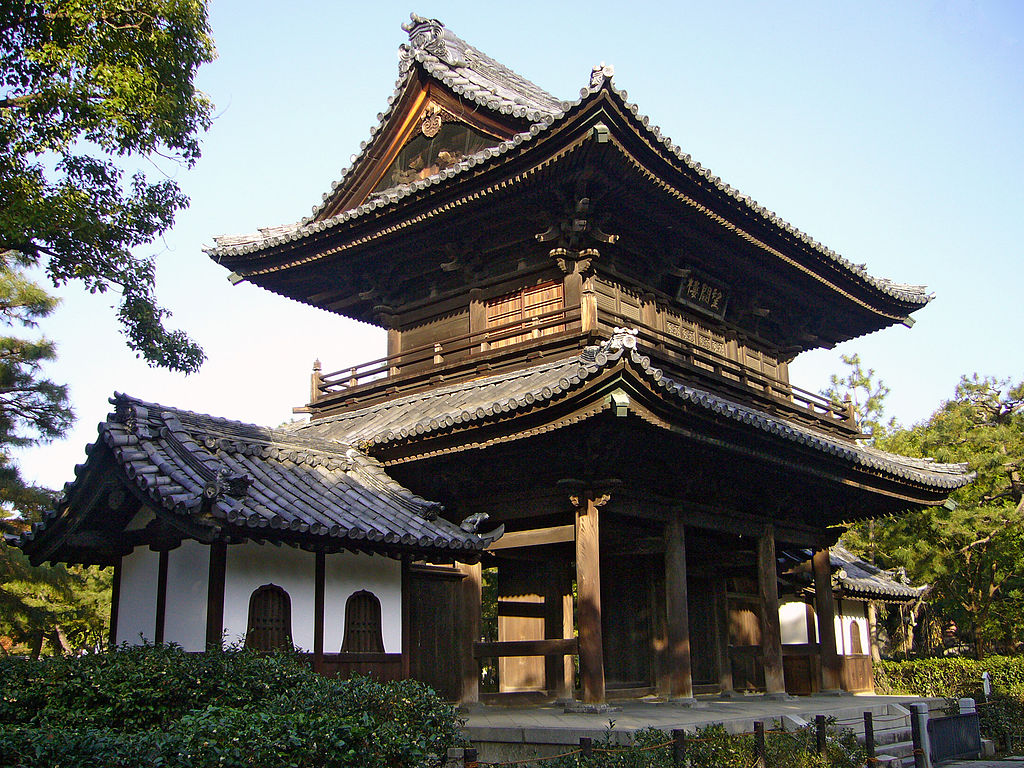
5. Seattle Japanese Garden
Seattle, Washington
Another can’t miss Zen garden in the US, The Seattle Japanese Garden is a 3.5 acre Japanese-style garden located within the Washington Park Arboretum. The garden was designed in 1960 by Juki Iida, a renowned Japanese landscape designer. It features a variety of hills and valleys, ponds, streams, and a waterfall, as well as a range of traditional Japanese garden features. With numerous koi ponds, bridges, lanterns, and stone basins, the garden also features a variety of plant species, including a number of trees and shrubs that are native to Japan.
The Seattle Japanese Garden is equally beautiful in the spring, summer, fall, and while it’s closed Dec-Feb, try to catch the garden with a dusting of snow on the ground during the winter months. A Japanese garden can feel even more serene during the quiet of winter. Make sure to check it out if you find yourself in the Seattle area!
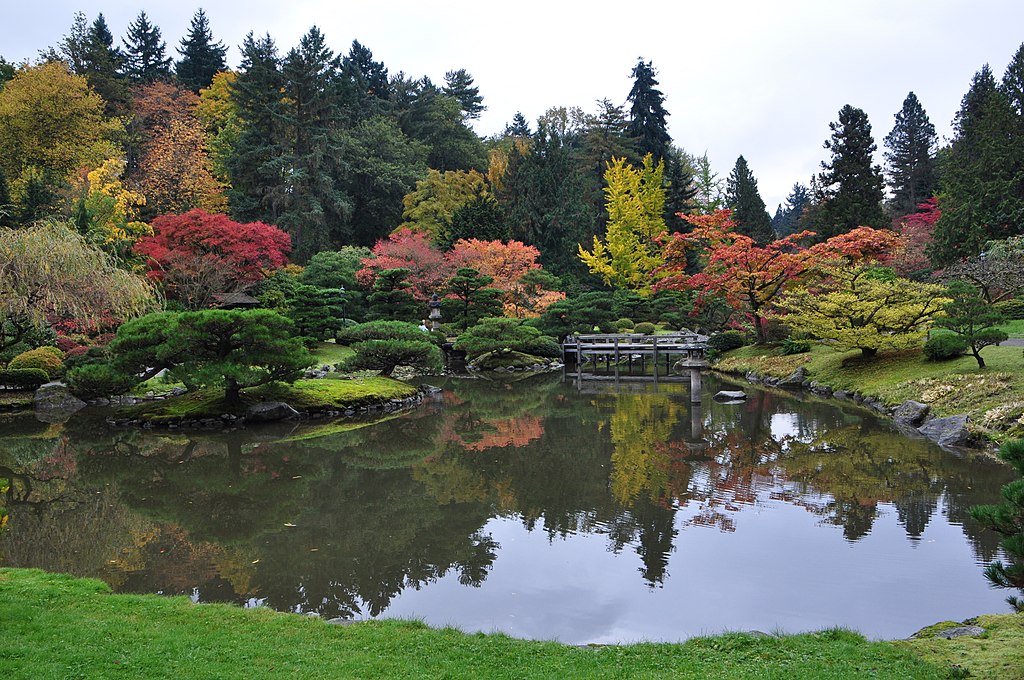
6. Shofuso Japanese House and Garden
Philadelphia, PA
Shofuso Japanese House and Garden is a traditional-style Japanese house and garden located in Philadelphia, Pennsylvania. It was originally built in 1953 as a gift from Japan to the United States to celebrate the American-Japanese alliance and the centennial of the first Japanese diplomatic mission to the United States. The house is a replica of a seventeenth-century samurai residence, and the garden is designed in the kaiyū-shiki teien (strolling garden) Japanese style. Visitors to Shofuso can learn about the history and culture of Japan by exploring the house and Zen garden, and participating in various educational programs and events.
Visitors can also feed the koi fish swimming in a pond under a 75-year-old cherry tree, and explore the traditional Japanese garden landscape over more than an acre.
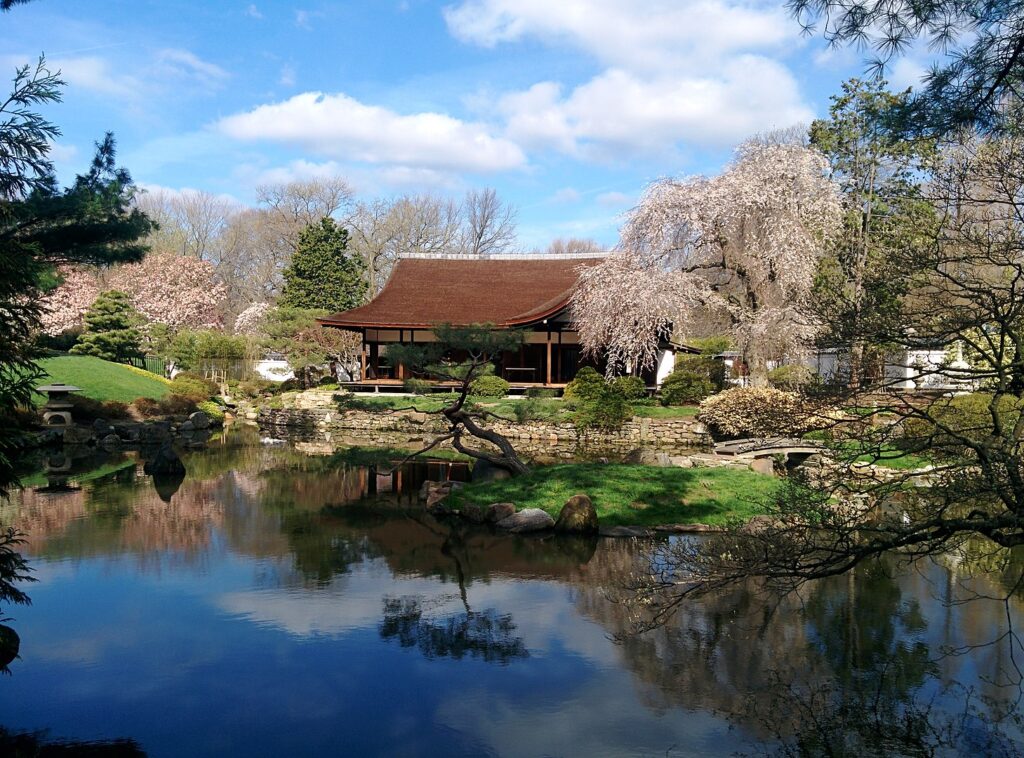
7. Morikami Museum, Delray Beach, Florida
The Morikami Museum and Japanese Garden is a museum of Japanese culture located in Delray Beach, Florida. It was founded in 1977 to preserve and share the legacy of George Morikami, a Japanese immigrant who donated his farm to Palm Beach County to create a park and museum. The museum features exhibitions on a variety of topics related to Japanese art, history, and culture, as well as a beautiful Japanese Zen garden. The garden is home to a variety of plants and trees, as well as a bonsai collection and a tea garden. The museum also offers a variety of educational programs and events, including workshops, lectures, and tea ceremonies.
The Morikami Museum is the perfect place to spend a quiet afternoon after a morning on the beach in Delray!
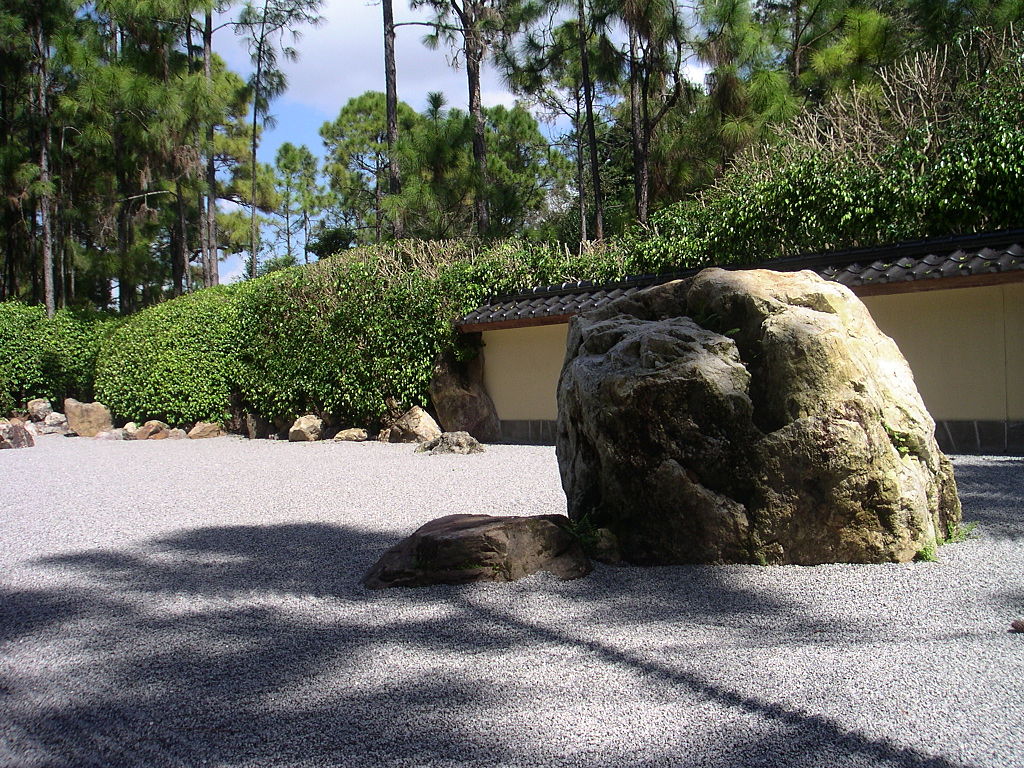
8. Kongobu-ji Temple, Koyasan, Japan
Kongobu-ji Temple is a Buddhist temple located in Koyasan, Japan. It is the head temple of the Shingon sect of Japanese Buddhism and is considered one of the most important temples in Japan. The temple was founded in 816 by the monk Kūkai, also known as Kōbō-Daishi, who is considered the founder of the Shingon sect. Kongobu-ji Temple is known for its beautiful gardens and architectural features, including the San-mon, or main gate, which is considered one of the most impressive gates in Japan. The temple also houses a number of important cultural treasures, including artwork and historical artifacts, and is home to one of the largest rock gardens in Japan.

More from Being Zen